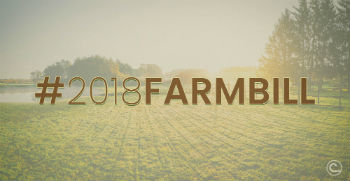FORESTRY REFORMS IN THE 2018 FARM BILL

In December, the Agriculture Improvement Act of 2018, also known as the 2018 Farm Bill, passed both chambers and was sent to President Donald Trump for his signature. Historically, the Forestry Title has been one of the more non-controversial titles debated between the chambers; however, it was one of the last items finalized due to the recent catastrophic wildfires in California.
President Trump, Agriculture Secretary Sonny Perdue and Interior Secretary Ryan Zinke all personally weighed in during the last weeks of negotiations, calling for more forest management reforms to be included in the final text.
Under Chairman K. Michael Conaway’s (R-TX) directive, the House farm bill included ten categorical exclusions (CATEX) to expedite environmental review under the National Environmental Policy Act (NEPA) for a variety of forest management activities. A CATEX still requires environmental review under NEPA, but by definition, it authorizes the federal agencies to not have to complete a full environmental impact statement or an environmental assessment. The Senate farm bill included six categorical exclusions to address forest management. Due to the politics behind these reforms, the final bill only includes one categorical exclusion to address insect and disease. The 2018 Farm Bill renews the insect and disease categorical exclusion, originally passed in the 2014 Farm Bill, for expedited reduction of hazardous fuels in our forests. Additionally, the final bill expedites treatment of federal land of up to 4,500 acres to protect and promote habitat for the Greater Sage Grouse and Mule Deer.
The 2018 Farm Bill promotes forest management by authorizing non-federal partners to remove timber on federal lands by expanding the Good Neighbor Authority (GNA). The 2014 Farm Bill provided GNA to states and Puerto Rico to perform watershed restoration and forest management services on National Forest System (NFS) lands. This year’s farm bill expands GNA to Indian Tribes and counties to provide more localized forest management and timber removal on federal forests. To incentivize GNA projects, these provisions allow states to retain the receipts from these projects for future work on NFS lands.
The 2018 Farm Bill also included efforts to improve cross-boundary wildfire mitigation by authorizing new collaborative efforts to treat hazardous fuel loads. The final bill strengthens existing authorities focusing on landscape-scale restoration projects to address watershed restoration efforts, wildfire risk reduction and wildlife habitat conservation. Conservation districts will be able to coordinate with federal partners to reduce fire risk in more fire-prone areas by increasing the number of forest management projects on public and private lands.
Overall, the final bill is a step in the right direction for advancing forest management reforms, though the bill could have made further improvements by including more categorical exclusions or allowing larger acreage tracts for CATEX. Nothing in this statute prohibits the U.S. Forest Service from completing multiple adjacent CATEX projects, and we are hopeful that the agency takes advantage of that authority. Conservation districts should look forward to partnering with tribes, counties, states and federal agencies to provide on-the-ground expertise for the landscape-scale restoration and cross-boundary mitigation projects.





